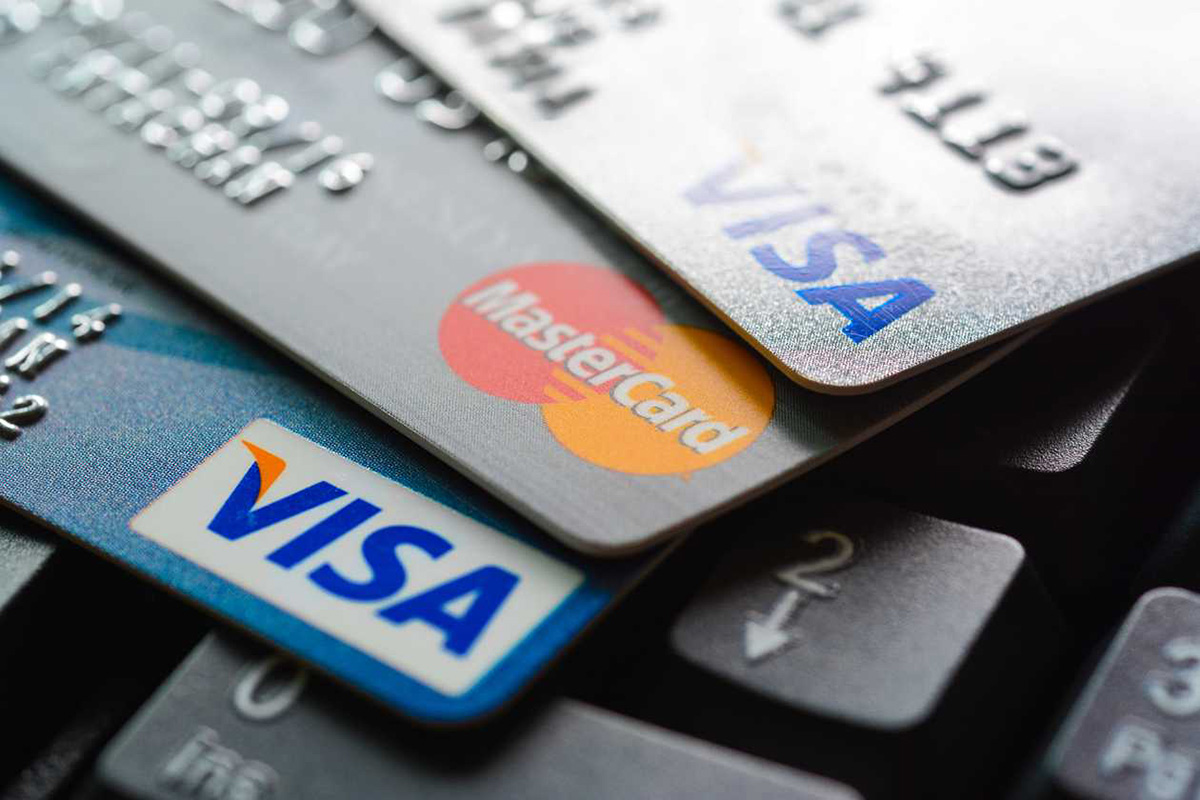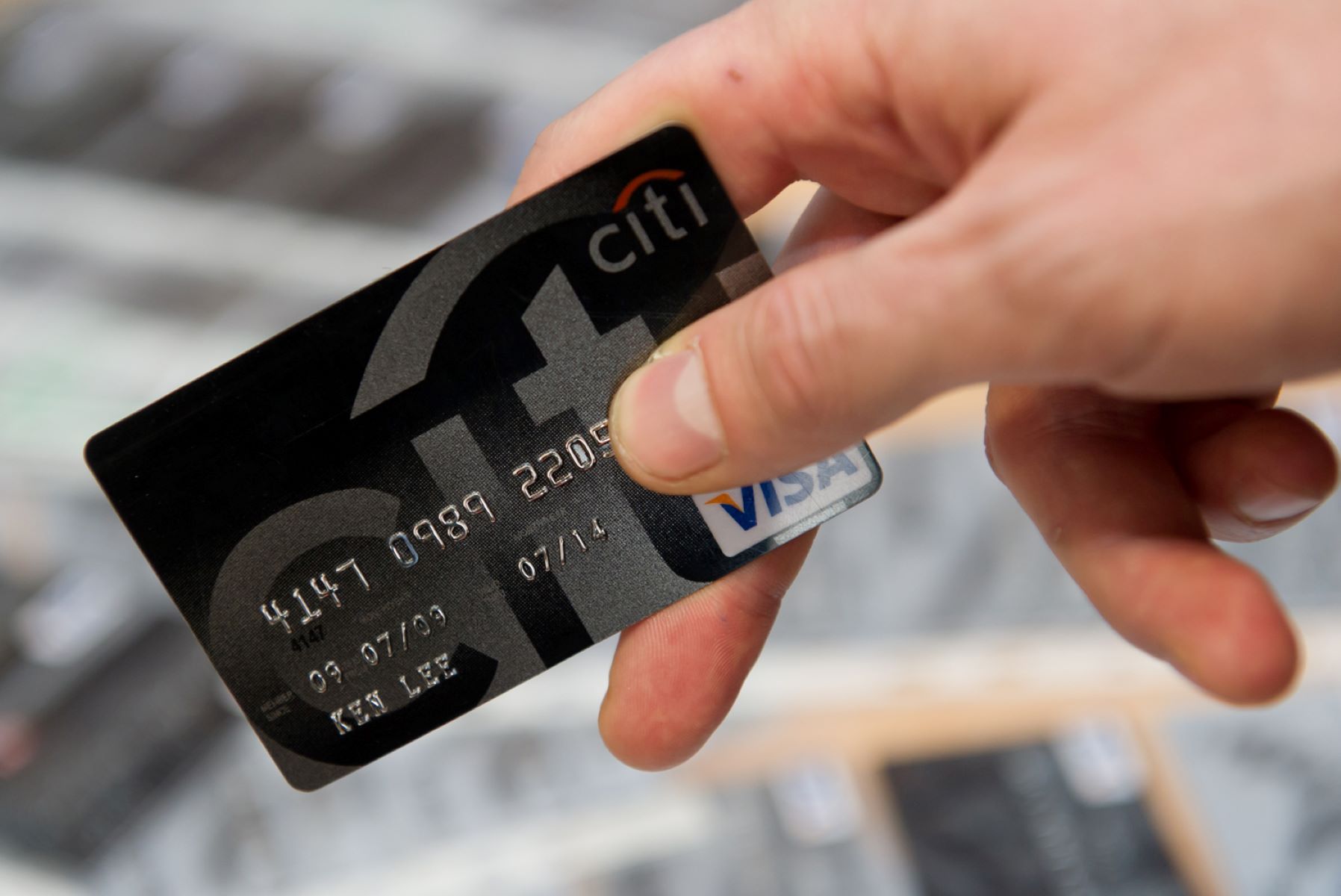Home>Finance>Which Routing Number To Use For Credit Card Payment


Finance
Which Routing Number To Use For Credit Card Payment
Modified: February 21, 2024
Learn about the finance routing number for credit card payment to ensure smooth transactions and avoid any errors. Simplify the payment process with the correct routing number.
(Many of the links in this article redirect to a specific reviewed product. Your purchase of these products through affiliate links helps to generate commission for LiveWell, at no extra cost. Learn more)
Table of Contents
Introduction
In the world of modern finance, credit cards have become an indispensable tool for daily transactions. From online shopping to dining out, credit cards offer convenience and flexibility. However, the process of making credit card payments involves a complex system of financial institutions and intermediaries. One crucial element in this process is the routing number.
The routing number is a unique nine-digit code assigned to each bank or credit union in the United States. It serves as a way to identify the financial institution involved in a transaction and helps in directing funds to the correct account. While routing numbers are commonly associated with checks and bank account transfers, they are also relevant when it comes to credit card payments.
In this article, we will explore the purpose of routing numbers, specifically in the context of credit card payments. We will delve into how to identify the correct routing number for credit card payments and navigate potential issues that may arise during the payment process. By understanding this aspect of credit card transactions, you can ensure smooth and secure payments while avoiding unnecessary complications.
The Purpose of Routing Numbers
Routing numbers play a crucial role in the financial system by facilitating the seamless transfer of funds between banks and credit unions. They serve as a means of identification, ensuring that money is correctly routed to the intended financial institution.
When it comes to credit card payments, routing numbers act as a bridge between the merchant, the credit card network, and the cardholder’s bank or credit union. They help process payments by ensuring that funds are transferred from the cardholder’s account to the merchant’s account efficiently and securely.
Routing numbers are diverse, with each financial institution having its own unique code. These numbers are assigned by the American Bankers Association (ABA) or the Automated Clearing House (ACH), depending on the type of financial institution. They are based on factors such as geographic location and the specific institution’s role in the banking system.
Typically, routing numbers consist of nine digits, divided into three segments. The first four digits represent the Federal Reserve routing symbol, which denotes the geographic region of the bank or credit union. The next four digits identify the specific financial institution, and the final digit is a validating checksum.
It is important to note that routing numbers are designed for different types of transactions. While some routing numbers are specific to wire transfers or ACH transactions, others are designated specifically for credit card payments. This distinction ensures that funds are directed to the correct account and processed accordingly.
Overall, routing numbers provide a vital layer of security and efficiency in the financial system. They enable accurate and swift processing of credit card payments, ensuring that transactions are completed seamlessly between merchants and cardholders’ financial institutions.
Routing Numbers for Credit Card Payments
When making a credit card payment, it is essential to use the correct routing number to ensure the funds are accurately transferred from your bank or credit union to the merchant. The routing number associated with credit card payments is generally not the same as the one used for other types of transactions, such as wire transfers or ACH transfers.
Most credit card issuers have specific routing numbers designated for credit card payments. These numbers are often different from the ones used for other transactions to efficiently process and track payments associated with credit cards. It is crucial to use the correct routing number to avoid delays or potential complications in the payment process.
To find the routing number for credit card payments, you can refer to your credit card statement or contact your credit card issuer directly. The routing number is typically listed along with other account details, such as the credit card number and the billing address. Some issuers may also provide the routing number on their website or customer service portal for easy access.
It is important to keep in mind that different credit card issuers may have their own routing numbers. Therefore, it is crucial to use the specific routing number associated with your credit card issuer to ensure the payment is processed correctly.
Additionally, if you have multiple credit cards from different issuers, you may need to use different routing numbers for each card. Make sure to check your statements or contact each issuer to obtain the correct routing numbers for your respective credit cards.
Using the correct routing number for credit card payments is essential for a smooth and efficient payment process. By doing so, you can ensure that your payments are processed accurately, reducing the risk of delays or other complications. Taking the time to verify and utilize the correct routing number can save you time and provide peace of mind when making credit card payments.
How to Identify the Correct Routing Number
Identifying the correct routing number for credit card payments may seem like a daunting task, but with the right information and resources, it can be a straightforward process. Here are a few steps to help you identify the correct routing number:
- Check your credit card statement: One of the easiest ways to find the routing number for credit card payments is to review your credit card statement. Most credit card issuers include the routing number along with other account details.
- Contact your credit card issuer: If you cannot find the routing number on your statement or have any doubts, reach out to your credit card issuer. They will be able to provide you with the accurate routing number to use for credit card payments. You can typically find the issuer’s contact information on their website or the back of your credit card.
- Use online resources: Many credit card issuers also provide routing number information on their websites. Check the issuer’s website for a “Routing Number” or “Payment Information” section where you can find the necessary details.
- Utilize customer service channels: If you prefer a more direct approach, contact the customer service department of your credit card issuer. They will be able to assist you in identifying the correct routing number for your credit card payments.
It is important to verify the routing number directly with your credit card issuer to ensure accuracy. Using an incorrect routing number can lead to payment delays, failed transactions, or even funds being directed to the wrong account. Taking the time to confirm the routing number ensures a reliable and smooth payment process.
Remember, if you have multiple credit cards from different issuers, each card may have its own unique routing number. Make sure to double-check and use the appropriate routing number for each credit card payment you make.
By following these steps and obtaining the correct routing number, you can confidently make credit card payments, knowing that the funds will be accurately transferred to the merchant without any unnecessary delays or complications.
Using the Routing Number for Credit Card Payments
Once you have identified the correct routing number for your credit card payments, the next step is to properly utilize it during the payment process. Here’s a guide on how to use the routing number effectively:
- Provide the routing number to the merchant: When making a credit card payment, the merchant will typically ask for certain payment details, including the routing number. Make sure to provide the accurate routing number associated with your credit card issuer. This information is crucial for the merchant to correctly process the payment.
- Double-check the routing number: Before submitting your payment, it’s essential to double-check the routing number you have entered. One small mistake can lead to payment complications or delays. Ensure that you have accurately transcribed the routing number and have not accidentally flipped any digits or input incorrect information.
- Validate the routing number: Many payment platforms or online systems have built-in validation systems that can help you confirm the accuracy of the routing number. These systems can cross-reference the routing number against a database to ensure it is valid and associated with the correct financial institution. Utilize these tools if available to reduce the risk of using an incorrect routing number.
- Keep a record of the payment details: It is good practice to keep a record of the credit card payment details, including the routing number used. This record can serve as a reference in case any issues arise during the payment process. Having this documentation readily available can expedite the resolution of any payment disputes or inquiries.
By correctly using the routing number when making credit card payments, you can ensure that your transactions are processed smoothly and securely. A valid routing number facilitates the accurate transfer of funds between your bank or credit union and the merchant, avoiding any unnecessary complications or delays.
Remember, if you ever have any doubts or questions about the routing number or payment process, do not hesitate to reach out to your credit card issuer or the merchant’s customer service for clarification. It is always better to seek assistance and ensure a seamless payment experience.
Potential Issues and Troubleshooting
While using the correct routing number for credit card payments is crucial, sometimes issues may still occur during the payment process. Here are some potential issues you may encounter and troubleshooting steps to resolve them:
- Payment rejection: If your payment is rejected or not processed successfully, it could be due to using an incorrect routing number. Verify that you have entered the correct routing number associated with your credit card issuer. Also, ensure that you have sufficient funds in your account to cover the payment.
- Invalid or unrecognized routing number: If the routing number you enter is flagged as invalid or unrecognized, double-check the number for errors, such as typos or transposed digits. Use the resources mentioned earlier, such as your credit card statement or contacting your credit card issuer, to confirm the correct routing number. If the issue persists, reach out to the merchant’s customer service for further assistance.
- Payment delay: In some cases, your payment may experience delays even if you have used the correct routing number. This could be due to factors beyond your control, such as network congestion or processing delays with the merchant or your bank. If your payment does not reflect on your credit card statement within a reasonable timeframe, contact the merchant or your credit card issuer to inquire about the status of the payment.
- Funds directed to the wrong account: While rare, there is a possibility of funds being directed to the wrong account if an incorrect routing number is used. If you suspect this has happened, immediately contact your credit card issuer to report the issue. They will guide you through the necessary steps to rectify the situation and investigate the fund’s whereabouts.
It is important to remain vigilant and proactive when it comes to credit card payments. Regularly review your credit card statements to ensure that your payments are reflected accurately. If you encounter any issues or discrepancies, address them promptly by contacting the appropriate parties.
By staying informed, using the correct routing number, and taking immediate action to resolve any payment-related issues, you can minimize disruptions and ensure a smooth payment experience with your credit card.
Conclusion
Understanding and utilizing the correct routing number for credit card payments is vital for a seamless and successful transaction process. Routing numbers serve as identifiers, ensuring that funds are accurately routed between banks, credit card networks, and merchants. By using the specific routing number associated with your credit card issuer, you can avoid payment complications and delays.
When identifying the correct routing number, refer to your credit card statement or contact your credit card issuer for accurate information. Double-check the routing number before submitting your payment and utilize validation tools if available. Keeping a record of your payment details can also assist in resolving any issues that may arise.
If you encounter any issues during the payment process, troubleshoot by checking for errors in the routing number, reaching out to the merchant or credit card issuer for assistance, and monitoring your credit card statement for any discrepancies. By addressing issues promptly and proactively, you can ensure the smooth processing of your credit card payments.
In conclusion, the routing number plays a crucial role in credit card payments, ensuring accurate fund transfers and avoiding unnecessary complications. By understanding how to identify and use the correct routing number, as well as troubleshooting potential issues, you can confidently make credit card payments with ease, knowing that your transactions will be processed accurately and securely.














